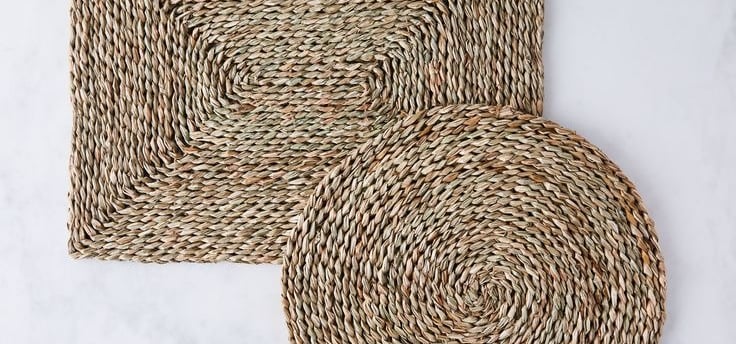The Art of Weaving: Creating Beautiful Seagrass Crafts
Weaving is a timeless craft that has been practiced for centuries, and seagrass weaving is one of its most beautiful and eco-friendly forms. Seagrass, a natural and sustainable material, is used to create a variety of functional and decorative items that bring a touch of nature into homes.


Weaving is a timeless craft that has been practiced for centuries, and seagrass weaving is one of its most beautiful and eco-friendly forms. Seagrass, a natural and sustainable material, is used to create a variety of functional and decorative items that bring a touch of nature into homes. Here’s a guide to the art of weaving eagrass crafts, highlighting techniques and tips to help you get started.
Understanding Seagrass
Seagrass is a flowering plant found in shallow coastal waters. Its long, slender leaves are harvested and dried to be used in weaving. Seagrass is known for its durability, flexibility, and natural resistance to moisture, making it an ideal material for crafting.
Benefits of Seagrass
Eco-Friendly: Seagrass is a renewable resource that grows quickly and requires minimal processing.
Durability: It’s strong and long-lasting, perfect for creating sturdy crafts.
Aesthetic Appeal: Its natural color and texture add a rustic charm to any decor.
Essential Weaving Techniques
1. Preparing the Seagrass
Before you begin weaving, it’s important to prepare the seagrass:
Soaking: Soak the seagrass in water for a few hours to make it more pliable and easier to work with.
Drying: After soaking, let the seagrass dry slightly until it reaches the desired flexibility.
2. Basic Weaving Techniques
Over and Under Weave: This is the most basic technique where the seagrass is woven over and under a set of vertical strands.
Start by laying out the vertical strands (warp) on a flat surface.
Take a horizontal strand (weft) and weave it over and under the warp strands.
Continue this pattern, alternating the over and under with each row.
Twining Weave: In this technique, two weft strands are twisted around each warp strand.
Lay out the warp strands.
Use two weft strands, twist them together around each warp strand, and continue the pattern.
3. Creating Shapes and Designs
Basket Weaving: One of the most popular forms of seagrass crafts is basket weaving. You can start with a simple round basket and progress to more complex shapes.
Create the base by weaving in a circular pattern.
Build up the sides by continuing the over and under weave, adjusting the tension to shape the basket.
Decorative Mats and Rugs: Seagrass mats and rugs are durable and add a natural touch to any space.
Use the basic over and under weave to create a flat mat.
Experiment with different patterns and designs to add visual interest.
Tips for Successful Weaving
1. Consistency in Tension
Maintain consistent tension while weaving to ensure an even and sturdy final product.
Avoid pulling too tight as it can distort the shape and make the seagrass brittle.
2. Finishing Touches
Trim any excess seagrass strands neatly to give your craft a polished look.
Consider adding decorative elements such as beads or colored threads to enhance the design.
3. Practice and Patience
Weaving is a skill that improves with practice. Start with simple projects and gradually take on more complex designs.
Be patient and enjoy the process. Each piece you create will be unique and a reflection of your craftsmanship.
Conclusion
The art of weaving seagrass crafts combines creativity with sustainability. By mastering basic weaving techniques and experimenting with different designs, you can create beautiful and functional items that add a natural charm to your home. Embrace the timeless craft of seagrass weaving and enjoy the satisfaction of creating handmade treasures that are both eco-friendly and aesthetically pleasing.
